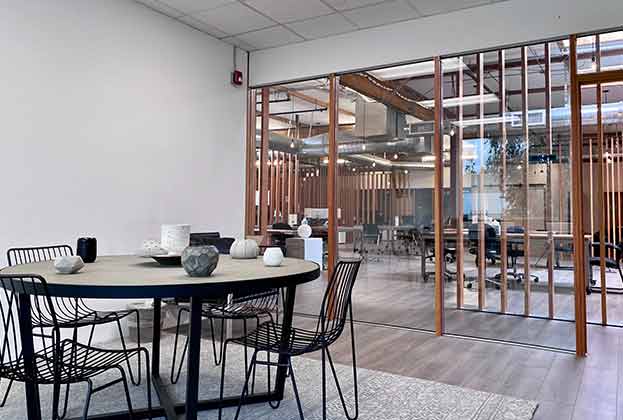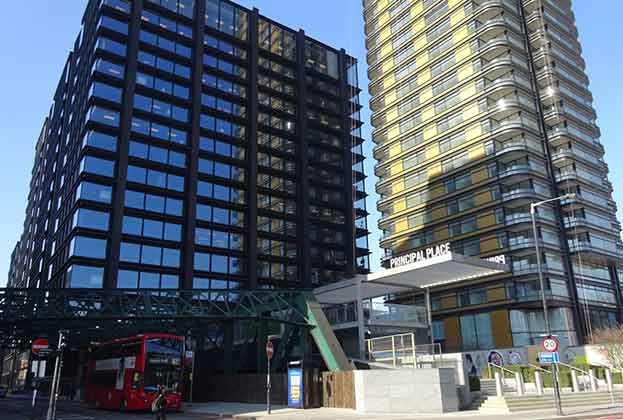Has the pandemic influenced landlord sentiment to the flexible office sector? Where are the future challenges and opportunities?
Savills completed a survey of landlords during the latter part of 2020 to gauge their views and attitudes towards the flexible workspace sector. In total, 24 landlords, including fund/asset managers, REITs and private owners responded. In total, the numbers of properties held by the respondents amounted to over 4,000 by number, but over 438m sq ft in terms of total size. The questions were posed about the impact of the flexible office sector and the attitudes towards the sector in general.
The first part of the survey reviewed the future attitude of the landlords to flexible workspace. 29% of the respondents already operate a flexible offer, but the key result is the fact that 29% would 'like to' or 'are planning to' operate their own brand.
The current portfolio size, by square footage, of those respondents that 'are planning to' amounts to nearly 304m sq ft. This is more than the office stock of the City of London and West End of London office market. An additional 1% of this 304m sq ft would be a sizeable addition to the stock of flexible workspace, and this is just based upon the responses that Savills received.
Savills asked, “how open are you to considering a management agreement (receiving rent based on the revenue or profit of your tenant) with a flexible office operator?”
There is a fairly even split between those respondents that are open or closed to the idea of management agreements – 41% are open to the idea, 39% are not, although we are hearing more positive sentiment towards management agreements moving forward as both understanding and transparency around them grows.
Since the onset of the pandemic, 54% are more likely to consider a management agreement, roughly half of which feel as though it is 'out of necessity'. This, again, reflects the view that flexibility for tenants will become increasingly important in the short term.
In summer 2021, Mike Barnes, Associate, Savills Research discusses with landlords; Andrew Mercer, Office Sector Lead, LGIM; Tom Gaynor, Head of Investment, CEG; Raj Rajput, Managing Director, Hines; Stephen Walker, Head of UK Business Space, Aberdeen Standard Investments; Julian Cobourne, Director, Aviva Investors; James Lowery, Head of Storey, British Land and Oli Knight, Head of Offices & Myo, Landsec on the future prospects for the flex sector.
1) Do you operate your own brand of flex workspace?
Tom Gaynor, CEG: “Yes, we want to make CEG buildings accessible for all business types and sizes. Our flex workspace brand Let Ready has seen great success with 140 studios across the UK, with further fitted spaces opening in 2022.”
Andrew Mercer, LGIM: “LGIM launched Capsule in 2018, which has grown to almost 1,000 desks across the UK. Terms are driven by market demand and range from two to five years on a mix of all-inclusive and traditional lease agreements”
Oli Knight, Landsec, Myo: “Myo is Landsec’s flexible office brand. Offices are designed to promote productivity, foster creativity and enable businesses and people to thrive. Established in 2019, Myo offers a turnkey offering on self-contained office space on terms of between one and five years, aimed at companies with between 10 and 150+ employees.
Companies have their own front door but with access to shared meeting rooms and amenity spaces, supported by a dedicated members concierge team. Although we do not provide a co-working offering, Myo members are able to work in the flexible workspace in multiple locations.”
Julian Cobourne, Aviva Investors: "Aviva Investors have made the strategic decision not to operate specifically branded flex workspace but we do have a growing offer of high quality fitted, plug and play office suites in various locations around our portfolio. In several locations, we have also partnered with flex space operators through management agreements and direct leases.”
James Lowery, British Land, Storey: “Storey is British Land’s solution to providing flexible private workspace. It appeals to scale up businesses with 20+ people looking to expand from traditional serviced offices to an environment where they have their own front door and can personalise the office the way they want, as well as large multinationals looking for satellite offices. Lease terms generally last for an average of two years, rather than monthly licence agreements. Spaces can be adapted to meet customers needs, thanks to its unique modular design."
2) What are the operational challenges you find with flex space in your schemes?
James Lowery, British Land, Storey: “When designing campus-style environments, landlords have more control over the direction of growth through their own flex office service. Four years ago, British Land launched Storey, which has expanded to provide over 350,000 sq ft of office space in London."
Raj Rajput, Hines: “Running a hotel-style service can be operationally intensive from a landlord’s perspective. Operational costs can vary and the benefit with management agreements is the visibility the landlord has if this is run in a true partnership arrangement. With traditional leases to serviced office companies, you are detached from the process and sometimes there is limited control of the overall scheme. What if, for example, the fitout or service offering from the operator is not up to standard?”
Oli Knight, Landsec (Myo): “Myo provides existing Landsec customers access to grow on space and bookable amenities/meeting rooms as well as attracting a new customer base of smaller businesses. Myo is more operationally intensive but now Landsec can offer a range of products and solutions for customers from a single landlord as workplace requirements shift to greater ‘core and flex’ or on-demand space provision. We plan to quadruple the footprint of Myo from the current 70,000 sq ft in Victoria and the City to 300,000 sq ft+ by opening as many as eight more workspaces over the next three to five years.”
3) How has your view of providing a flex offering changed as a result of the pandemic? What changes have you observed?
Andrew Mercer, LGIM: “The flex market can no longer be defined by just short lease terms as we are finding occupiers wanting greater choice and flexibility over how they lease space from short-term serviced to longer-term fitted, managed, turnkey and traditional Cat A.”
James Lowery, British Land, Storey: “Flex remains here to stay, with the decision making of our conventional occupiers being increasingly influenced by the presence of Storey. One of our growing service lines is Storey Club, designed to provide customers with the ability to book meeting rooms, event space or drop-in workspace.”
Tom Gaynor, CEG: “Companies want the lease break option as a fallback, although very often, they don’t choose to activate it.”
Stephen Walker, Abrdn: “We’ve seen that many tenants are now less willing to invest in CapEx to take conventional space and we’ve responded with more fully fitted, occupation-ready space. Flexibility is key and some tenants will only sign for office space if there is swing space available in the building that allows options to grow.”

4) Since the pandemic, have you become more willing to offer short term lease agreements on conventional space?
Stephen Walker, Abrdn: “Absolutely. There’s probably an over-estimation of how many tenants want to take space on a super-flexible basis, (less than 12 months term certain) but we’re certainly open to shorter-term leases. In the managed space, longer-term leases to flex operators have traditionally been the preference, but we anticipate more management agreements emerging.”
Raj Rajput, Hines: "Landlords are realising the rising need for flexible terms and are becoming more positive towards this if this ultimately means this space is leased. There is likely to be more of a partnership with our occupier clients which intrinsically may mean more lease flexibility, but in the long run, I believe occupiers will start to show brand loyalty to those that are listening and working to their needs."
Julian Cobourne, Aviva Investors: “We have seen some tenants seek more flexible lease lengths and early break options since the pandemic, predominantly at the smaller end of the market. However, for larger tenant requirements, we are still finding that longer-term leases work well for them.”
5) What sort of workplace technology is being implemented in your flexible office schemes?
James Lowery, Storey, British Land: “At 100 Liverpool Street, Storey has implemented smart sensors within the building to provide companies with analytics on utilisation rates. Our new customer engagement app, which has been rolled out across our campuses is designed to help people get the most from their time there, from providing contactless access to buildings to enabling mobile booking of meeting rooms – you can even order coffees from shops on campus.”
Oli Knight, Landsec, Myo: “Landsec has adopted the WELL building standard across the portfolio including the Myo portfolio with workplace sensors to measure the indoor environmental qualities including CO2, humidity and noise levels. This ensures occupiers have the most productive workspace through a focus on health and wellbeing. Myo Liverpool Street, (pictured below), is the first flex workspace in the City to receive the WELL building accreditation. Since the pandemic, Myo has incorporated new cleaning regimes including pioneering Zoono fogging technology to keep critical surfaces and touchpoints hygienic for up to 30 days.”

Myo, Liverpool Street
6) How are you incorporating ESG into your flex offer?
Tom Gaynor, CEG: “Customers big and small are driving the shift to net zero carbon and CEG are incorporating carbon neutrality into new developments. From net zero fit outs to net zero in operation, we’ve got to give our customers the avenue to make a positive impact.”
Stephen Walker, Abrdn: “ESG provision is critical for us. Companies are more focused on wellness and attracting staff back to the office than ever before. We have various initiatives focussing on a range of aims from net zero carbon to improving air quality and increasing wellbeing provisions. For instance, at a current refurbishment project in Edinburgh, we’re planning to remove all car parking spaces and replace them entirely with cycle spaces and high quality changing amenities.”
Andrew Mercer, LGIM: “LGIM is committed to achieving net zero carbon in all our assets by 2050 or before. We are working towards this in Capsule offices by only procuring renewable energy, replacing gas-fuelled central plant with more sustainable alternatives, working with occupiers to measure and manage energy use against science-based targets and reducing embodied carbon through initiatives such as sourcing sustainable furniture.”
7) Where do you see the growth opportunities for flexible offices?
Julian Cobourne, Aviva Investors: “Our fitted space product has been very well received by our customers and we expect to see further growth in demand going forward, particularly in the sub 5,000 sq ft size requirements. Aviva Investors will continue to evolve our offer in this market based on our client feedback and we expect to see it becoming a more sizeable part of our leasing activity. We have also seen growth opportunities in fitted lab space at our life science park in Cambridge, an occupational market that is currently strong. We recently brought forward 80,000, sq ft of fitted laboratory space in two separate buildings, all of which pre-let before completion, and we intend to develop more of this type of product.
Stephen Walker, Abrdn: “Fitted workspaces available on flexible leases are definitely a growth area, especially when finished to a high quality, attractive specification with enhanced service provision. We see more demand for flex offices in the 5–10k sq ft range across regional cities and feel that central London, Birmingham, Manchester and Cambridge will remain key areas of growth for flex services moving forward.”
Read the articles within Spotlight: UK Flex Office Perspectives below.
FURTHER INFORMATION


.jpg)




.jpg)




